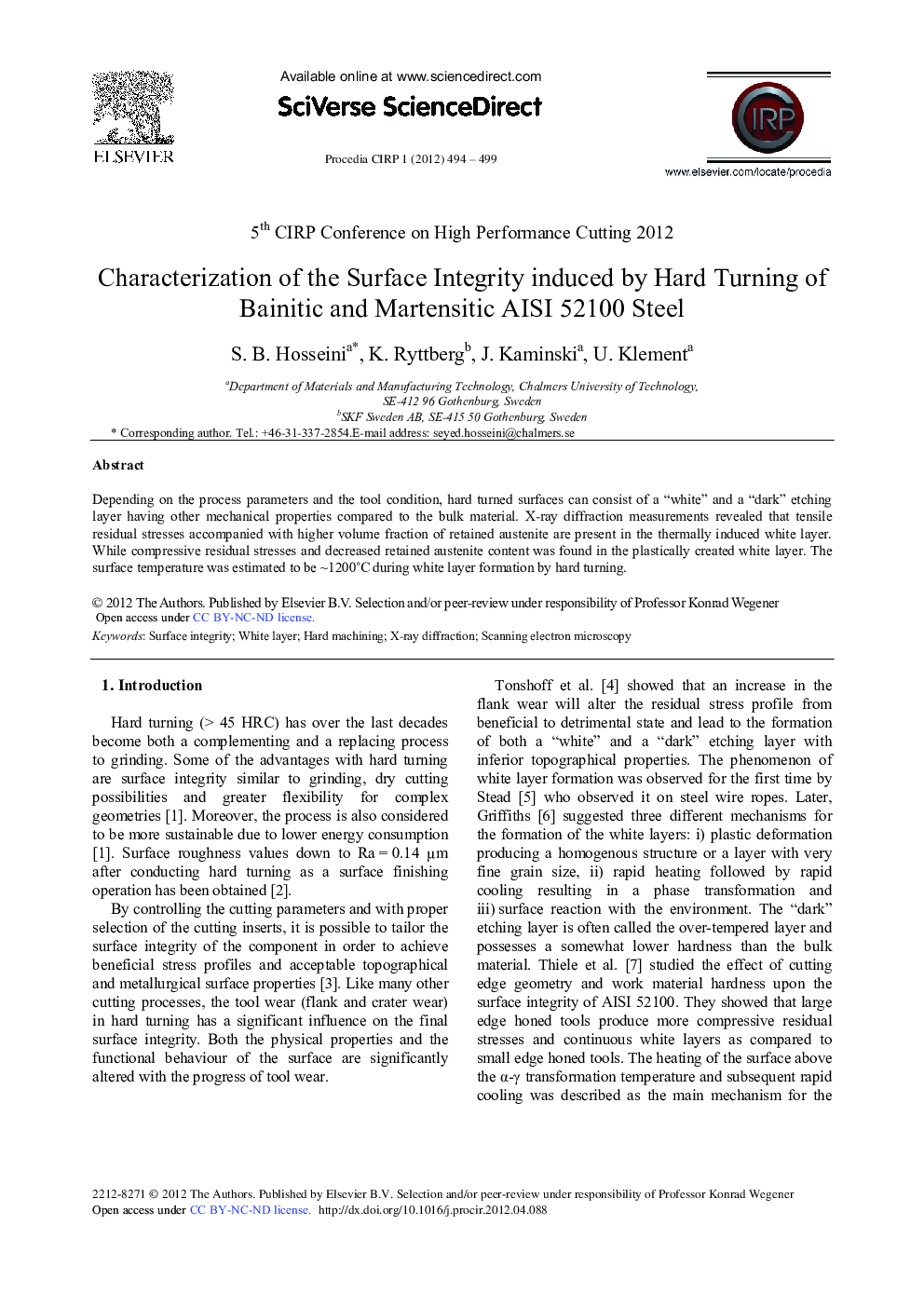| Article ID | Journal | Published Year | Pages | File Type |
|---|---|---|---|---|
| 1701549 | Procedia CIRP | 2012 | 6 Pages |
Abstract
Depending on the process parameters and the tool condition, hard turned surfaces can consist of a “white” and a “dark” etching layer having other mechanical properties compared to the bulk material. X-ray diffraction measurements revealed that tensile residual stresses accompanied with higher volume fraction of retained austenite are present in the thermally induced white layer. While compressive residual stresses and decreased retained austenite content was found in the plastically created white layer. The surface temperature was estimated to be â¼1200°C during white layer formation by hard turning.
Related Topics
Physical Sciences and Engineering
Engineering
Industrial and Manufacturing Engineering
Authors
S.B. Hosseini, K. Ryttberg, J. Kaminski, U. Klement,
